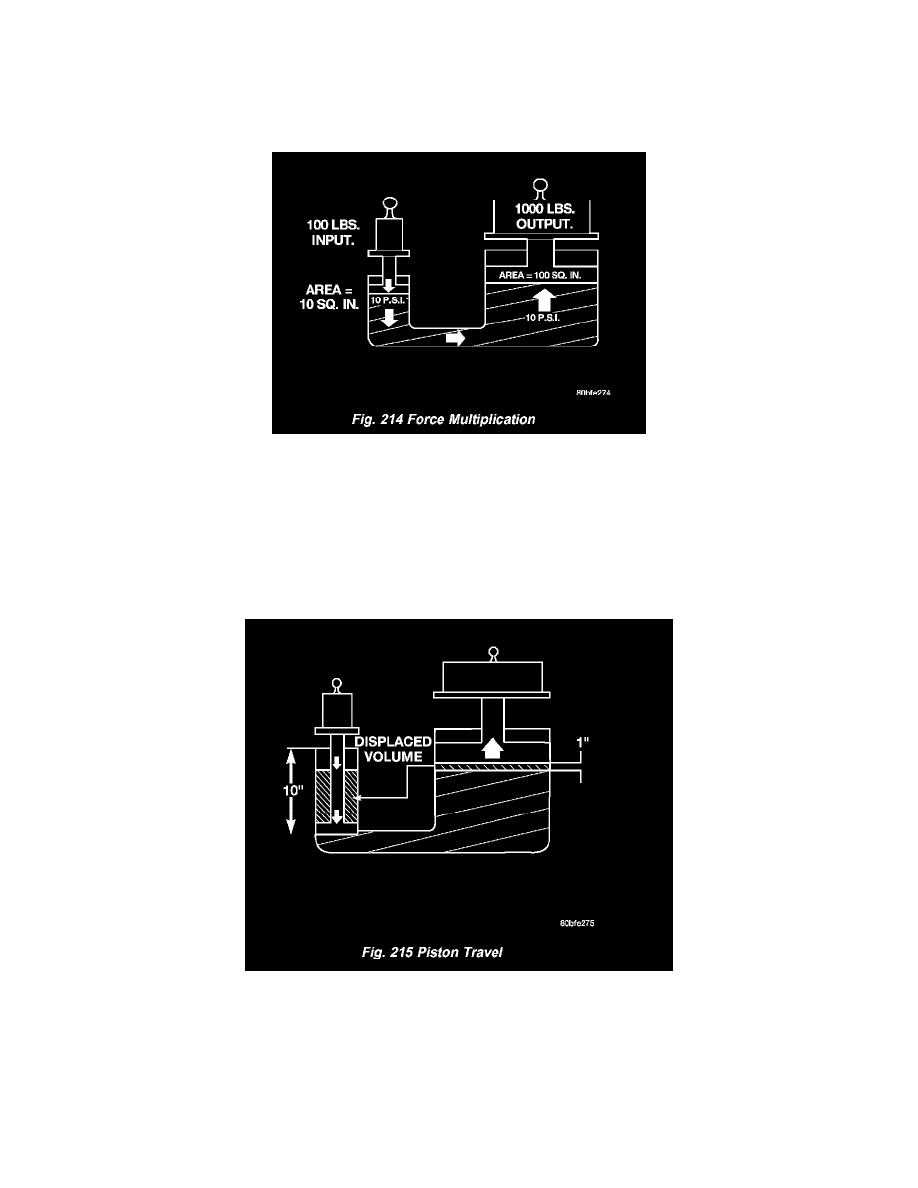RAM 1500 Truck 4WD V8-5.9L VIN Z (2002)

force exerted is downward (gravity), however, the principle remains the same no matter which direction is taken. The pressure created in the fluid is
equal to the force applied, divided by the piston area. If the force is 100 lbs., and the piston area is 10 square inch, then the pressure created equals 10
PSI. Another interpretation of Pascal's Law is that regardless of container shape or size, the pressure will be maintained throughout, as long as the fluid
is confined. In other words, the pressure in the fluid is the same everywhere within the container.
FORCE MULTIPLICATION
Using the 10 PSI example used in the illustration (Fig. 214), a force of 1000 lbs. can be moved with a force of only 100 lbs. The secret of force
multiplication in hydraulic systems is the total fluid contact area employed. The illustration, (Fig. 214), shows an area that is ten times larger than the
original area. The pressure created with the smaller 100 lbs. input is 10 PSI. The concept "pressure is the same everywhere" means that the pressure
underneath the larger piston is also 10 PSI. Pressure is equal to the force applied divided by the contact area. Therefore, by means of simple algebra, the
output force may be found. This concept is extremely important, as it is also used in the design and operation of all shift valves and limiting valves in the
valve body, as well as the pistons, of the transmission, which activate the clutches and bands. It is nothing more than using a difference of area to create a
difference in pressure to move an object.
PISTON TRAVEL
The relationship between hydraulic lever and a mechanical lever is the same. With a mechanical lever it's a weight-to-distance output rather than a
pressure-to-area output. Using the same forces and areas as in the previous example, the smaller piston (Fig. 215) has to move ten times the distance
required to move the larger piston one inch. Therefore, for every inch the larger piston moves, the smaller piston moves ten inches. This principle is true
in other instances also. A common garage floor jack is a good example. To raise a car weighing 2000 lbs., an effort of only 100 lbs. may be required. For
every inch the car moves upward, the input piston at the jack handle must move 20 inches downward.
